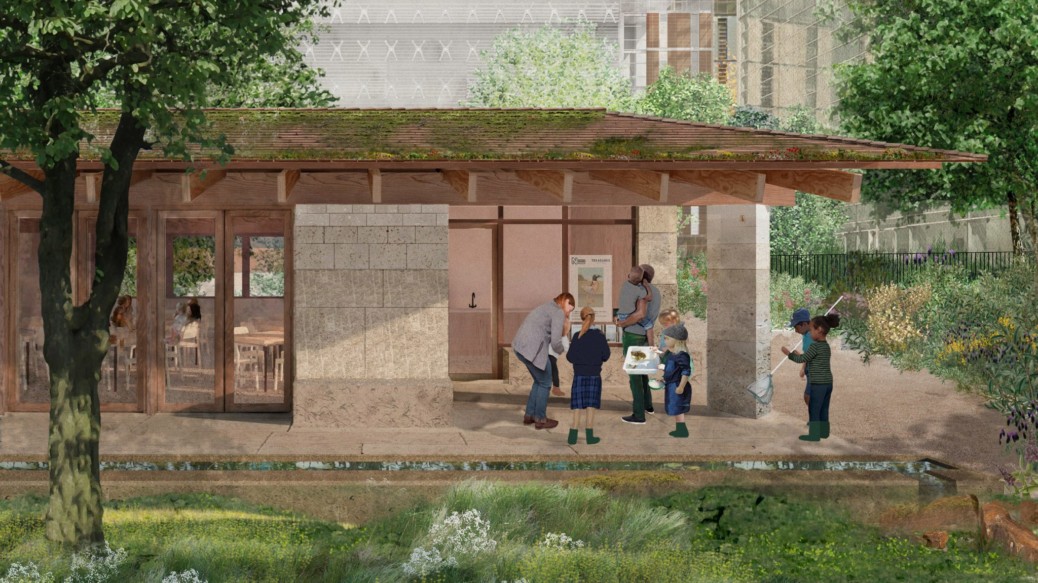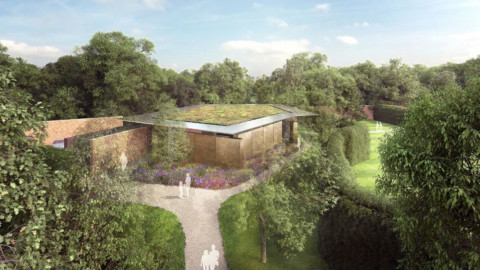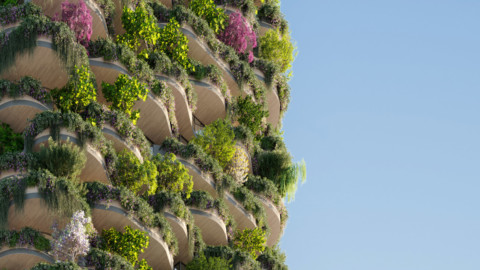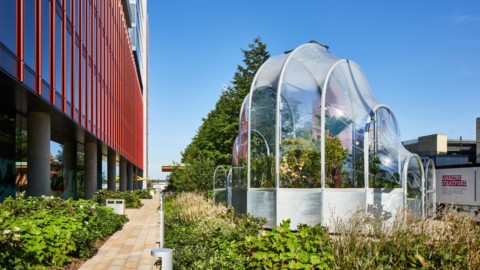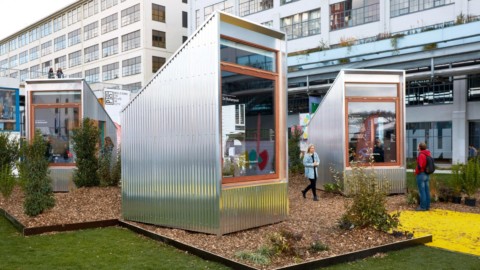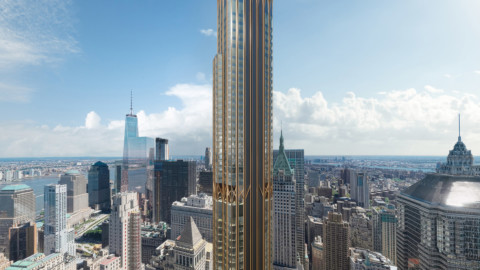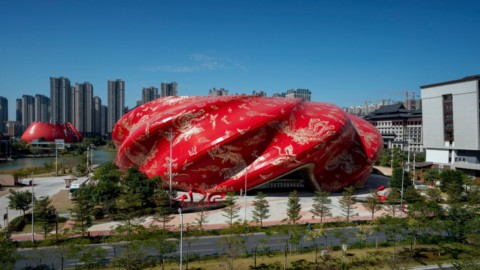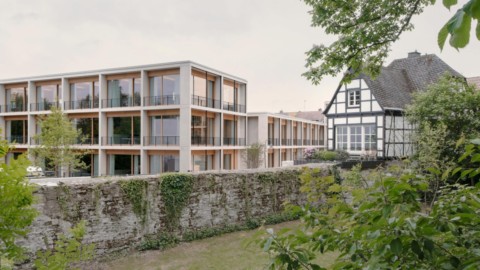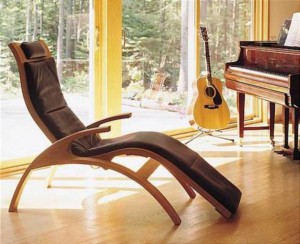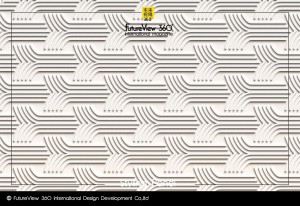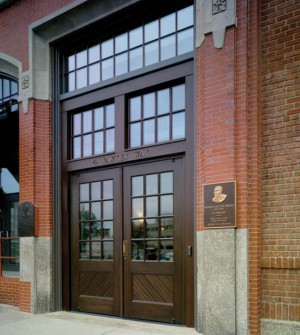Feilden Fowles and J & L Gibbons have unveiled plans to overhaul the gardens at London’s Natural History Museum to create a hub for education and biodiversity called the Urban Nature Project.
The Urban Nature Project will involve the redesign of two hectares of land around the iconic 19th-century building by Alfred Waterhouse, alongside the construction of two low-lying, stone-clad pavilions.
Feilden Fowles and J & L Gibbons’ aim is to maximise the biodiversity and accessibility of the museum’s grounds and, in turn, invite people living in and visiting the capital to re-engage with nature.
Feilden Fowles和J&L Gibbons在倫敦自然歷史博物館宣布了大修花園的計劃,以創建一個稱為“城市自然項目”的教育和生物多樣性中心。
城市自然項目將涉及重新設計由阿爾弗雷德·沃特豪斯(Alfred Waterhouse)建造的標誌性的19世紀建築周圍的兩公頃土地,以及建造兩個低矮的石砌亭子。
Feilden Fowles和J&L Gibbons的目標是最大程度地提高博物館場地的生物多樣性和可及性,並反過來邀請居住和參觀首都的人們與自然重新融合。
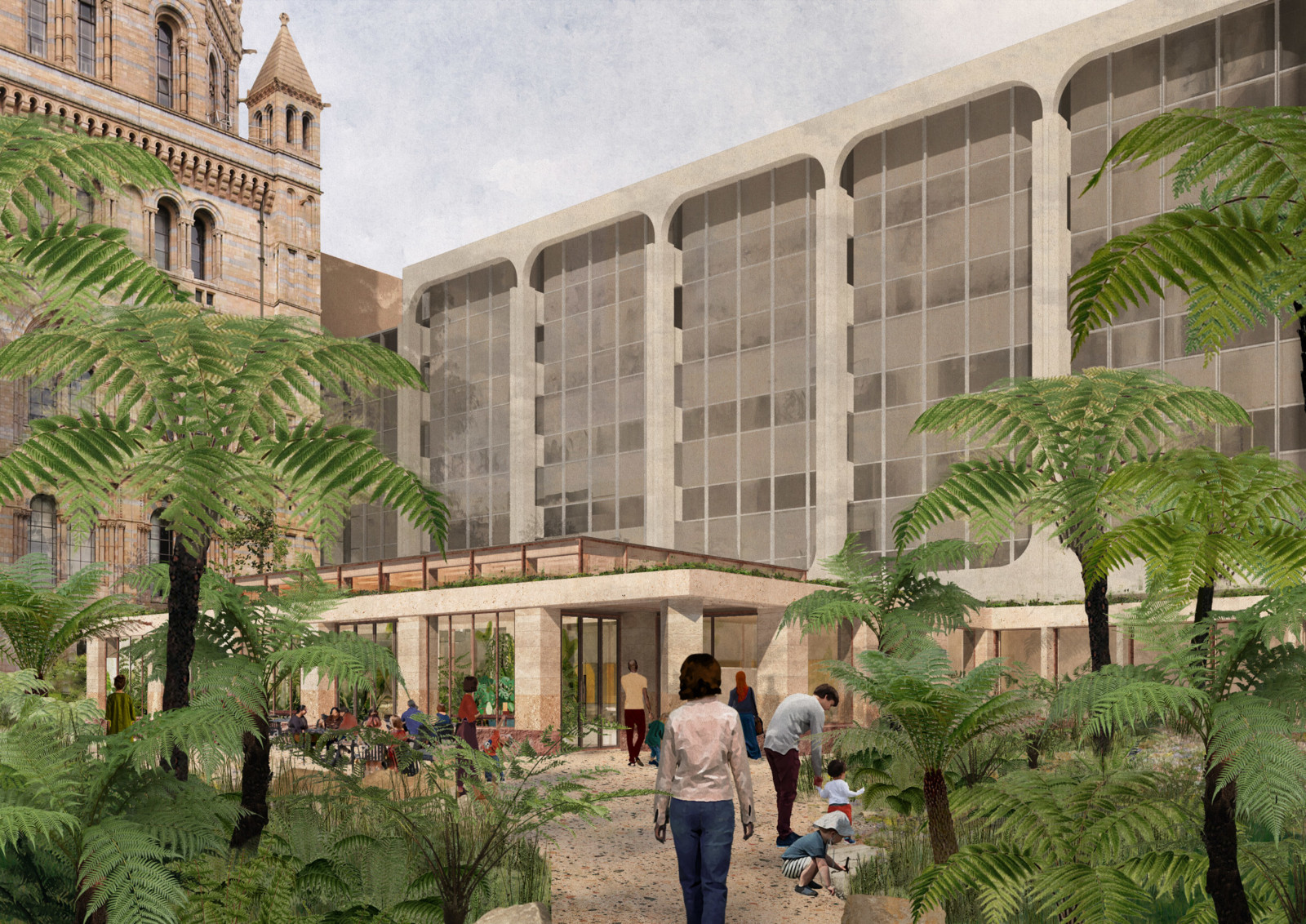
“The Urban Nature Project is a dream commission, embodying so many of our team’s social and environmental values,” said Edmund Fowles, director of Feilden Fowles.
“Never has the need to re-engage with nature and understand our impact on biodiversity been more urgent,” he explained.
“Together with the transformation of the museum’s five-acre gardens, two new pavilions embedded within the landscape will provide much-needed facilities to broaden access and engagement with the vital messages of the project.”
費爾登·福爾斯(Feilden Fowles)董事埃德蒙·福爾斯(Edmund Fowles)表示:“城市自然項目是一個夢想委員會,體現了我們團隊的許多社會和環境價值。
他解釋說:“再也不需要與自然重新接觸並了解我們對生物多樣性的影響更為緊迫。”
“連同博物館佔地五英畝的花園的改造,景觀中嵌入的兩個新展館將提供急需的設施,以擴大訪問範圍並與項目的重要信息互動。”
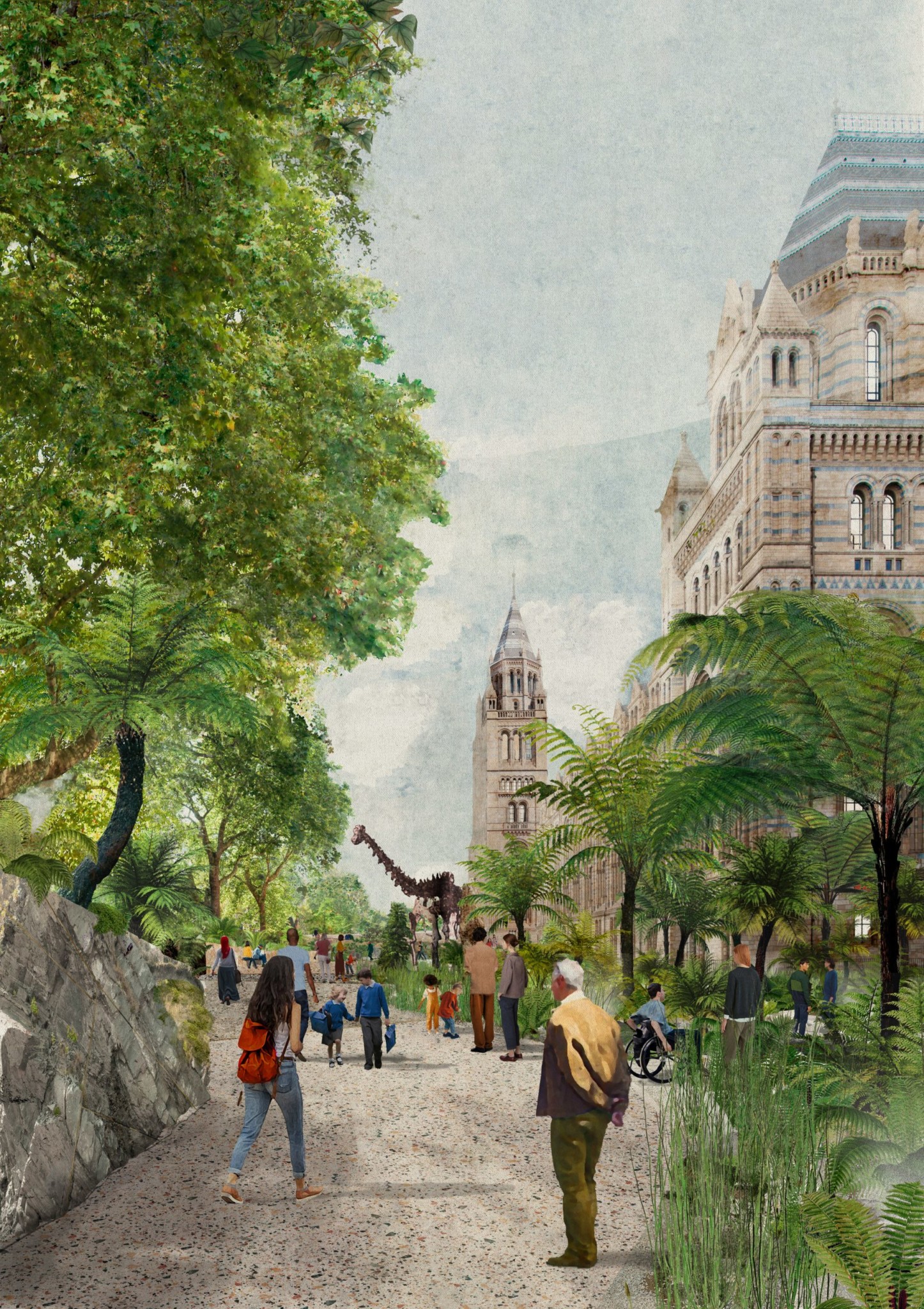
The Urban Nature Project is slated for completion in 2023 and forms a part of the Natural History Museum’s wider ambition to protect nature in urban areas and make cities more sustainable places to live.
The proposal replaces another design for the site by Niall McLaughlin Architects and Kim Wilkie that imagined an upgrade to the museum’s entrance areas, but was never realised.
都市自然項目計劃於2023年完成,是自然歷史博物館更宏偉的雄心壯志的一部分,該雄心壯志旨在保護城市地區的自然環境,並使城市成為更具可持續性的居住地。
該提案取代了Niall McLaughlin Architects和Kim Wilkie為該場地設計的另一種設計,該設計原本是對博物館入口區域的升級,但從未實現。
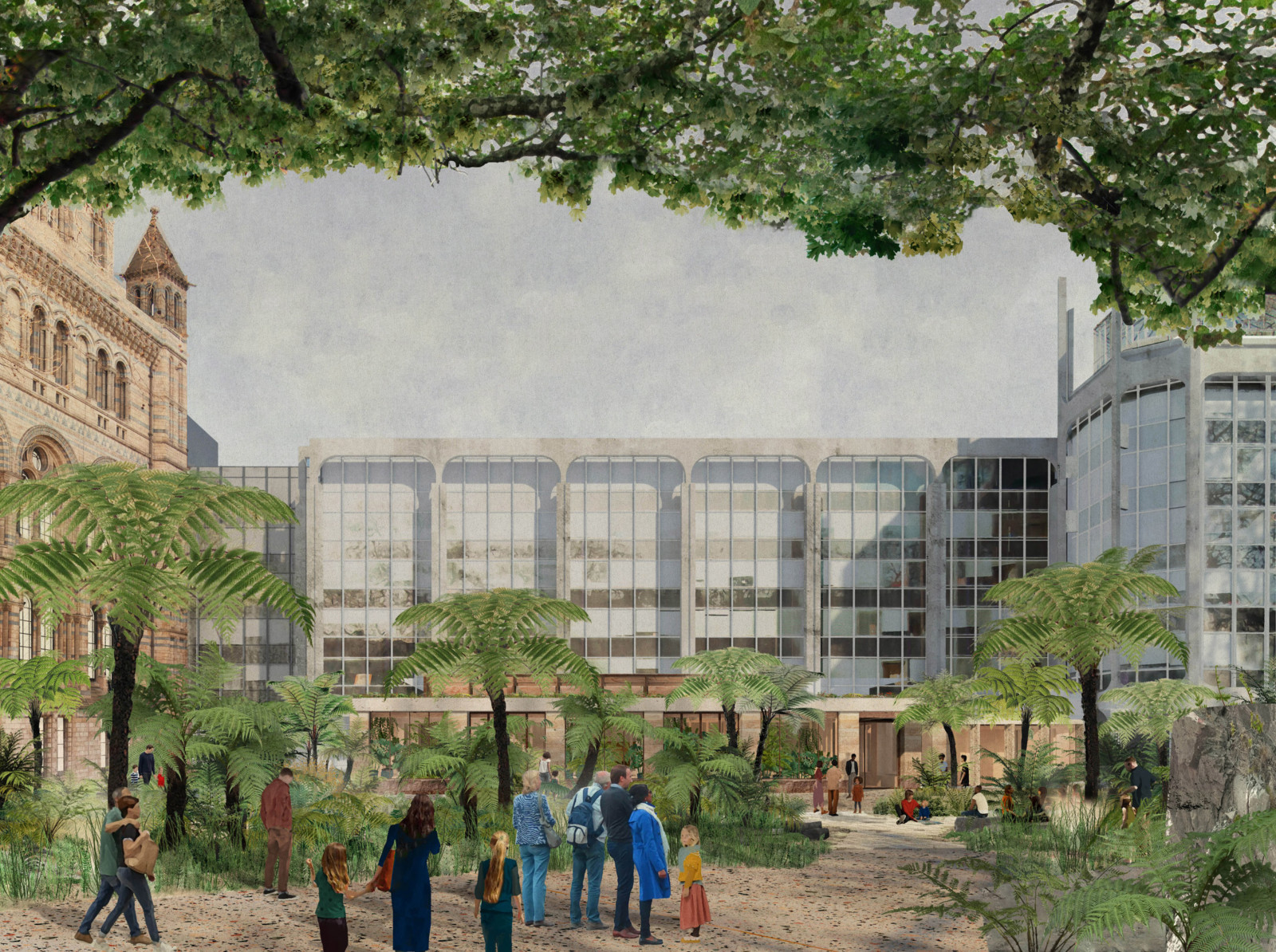
The scheme is divided into two gardens, positioned to the east and west of the museum’s entrance, which will be landscaped to offer a brief overview of natural history and encourage local biodiversity.
In the east-side garden, this will include plants, fossils and exhibits that echo different geological eras ranging from the Cambrian period 540 million years ago to the present day.
The east garden will also feature a replica of Dippy, the Natural History Museum’s famous dinosaur skeleton that once occupied its main hall, and incorporate the first of the two pavilions by Feilden Fowles.
This pavilion, named the Garden Building, is modelled on Victorian orangeries and contains a cafe, seasonal storage and a display of the exotic plants.
該計劃分為兩個花園,分別位於博物館入口的東側和西側,將對其進行景觀美化,以簡要概述自然歷史並鼓勵當地的生物多樣性。
在東邊的花園中,將包括植物,化石和展品,它們呼應了從5.4億年前的寒武紀至今的不同地質時代。
東部花園還將以自然歷史博物館著名的恐龍骨架Dippy的複製品為原型,該骨架曾佔據其主要大廳,並融合了Feilden Fowles的兩個展館中的第一個。
這個名為花園大廈的涼亭以維多利亞時期的橘園為原型,並設有咖啡館,季節性儲藏室和各種外來植物陳列。
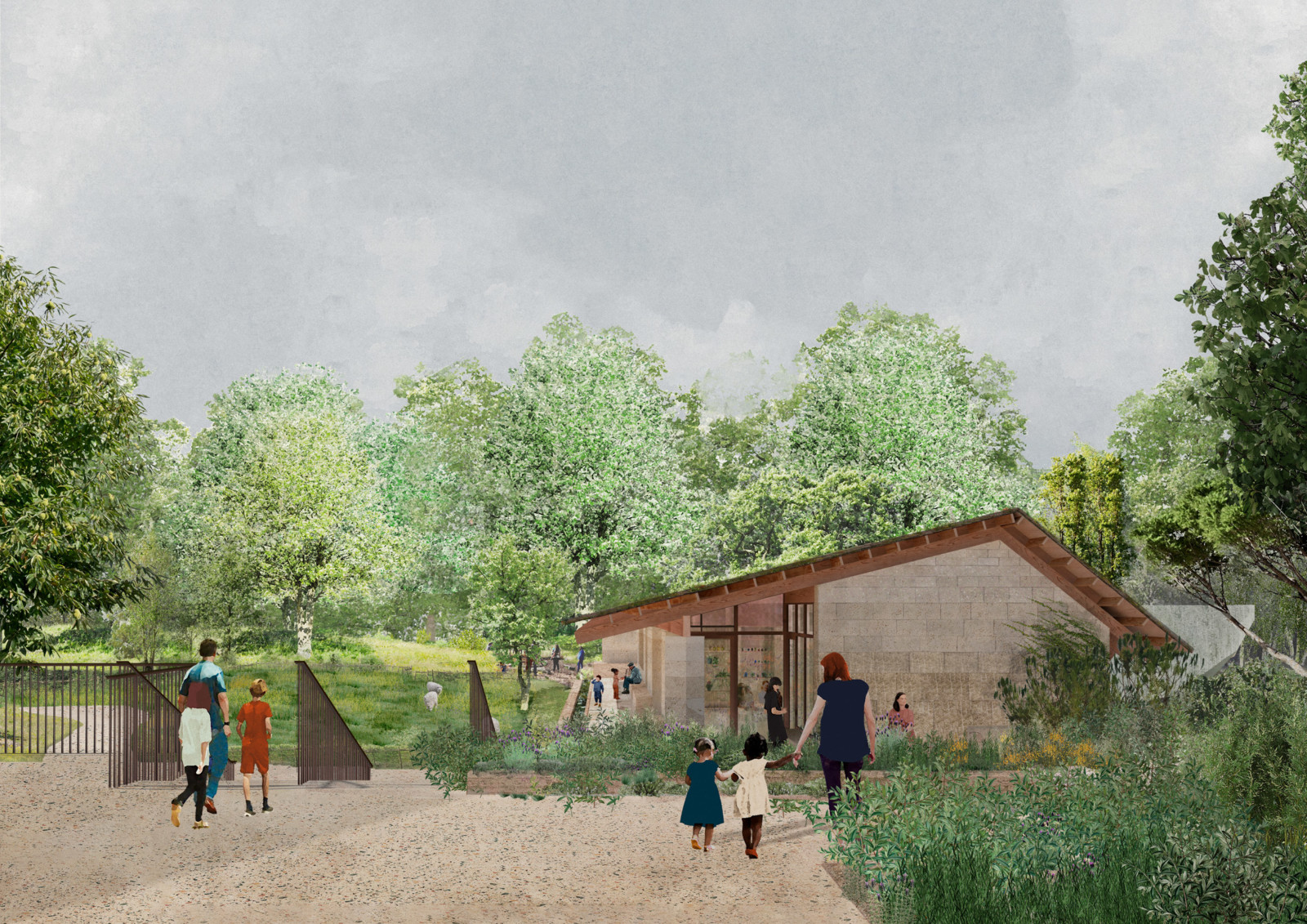
Urban Nature Project’s west garden will be designed by the studios as a model urban landscape, giving insight into biodiversity that can be found in cities in the UK.
Nestled within it will be the scheme’s second pavilion, the Learning Centre, which will be used for scientific projects, educational activities, and as space for the volunteers that maintain the museum’s gardens.
工作室將城市自然項目的西花園設計為城市景觀樣板,從而洞悉英國城市中可以發現的生物多樣性。
計劃的第二個展館將位於其中,即學習中心,該中心將用於科學項目,教育活動,並作為維護博物館花園的志願者的空間。
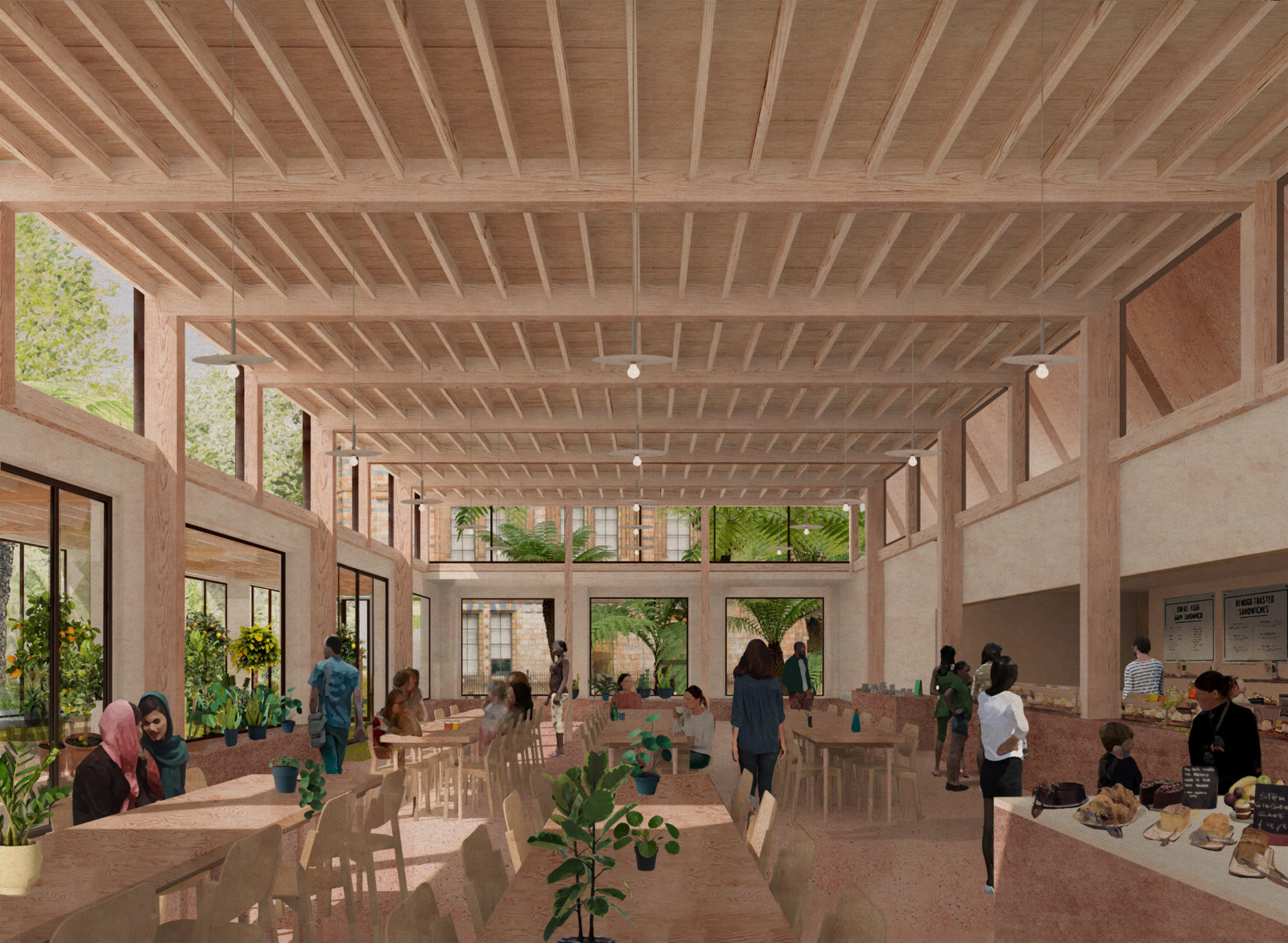
According to Feilden Fowles, both pavilions will be clad in stone and are being developed with a “low-tech” approach to ensure they have a low carbon footprint.
“[The pavilions] embody our practice’s low-tech design approach, providing buildings with exceptionally low energy use to meet the project’s net-zero carbon target,” explained Fowles.
根據Feilden Fowles的說法,兩個展館都將被石頭覆蓋,並且正在採用“低技術”方法進行開發,以確保它們的碳足跡較低。
Fowles解釋說:“這些展館體現了我們實踐的低技術設計方法,為建築物提供了極低的能源消耗,從而實現了項目的零碳目標。”
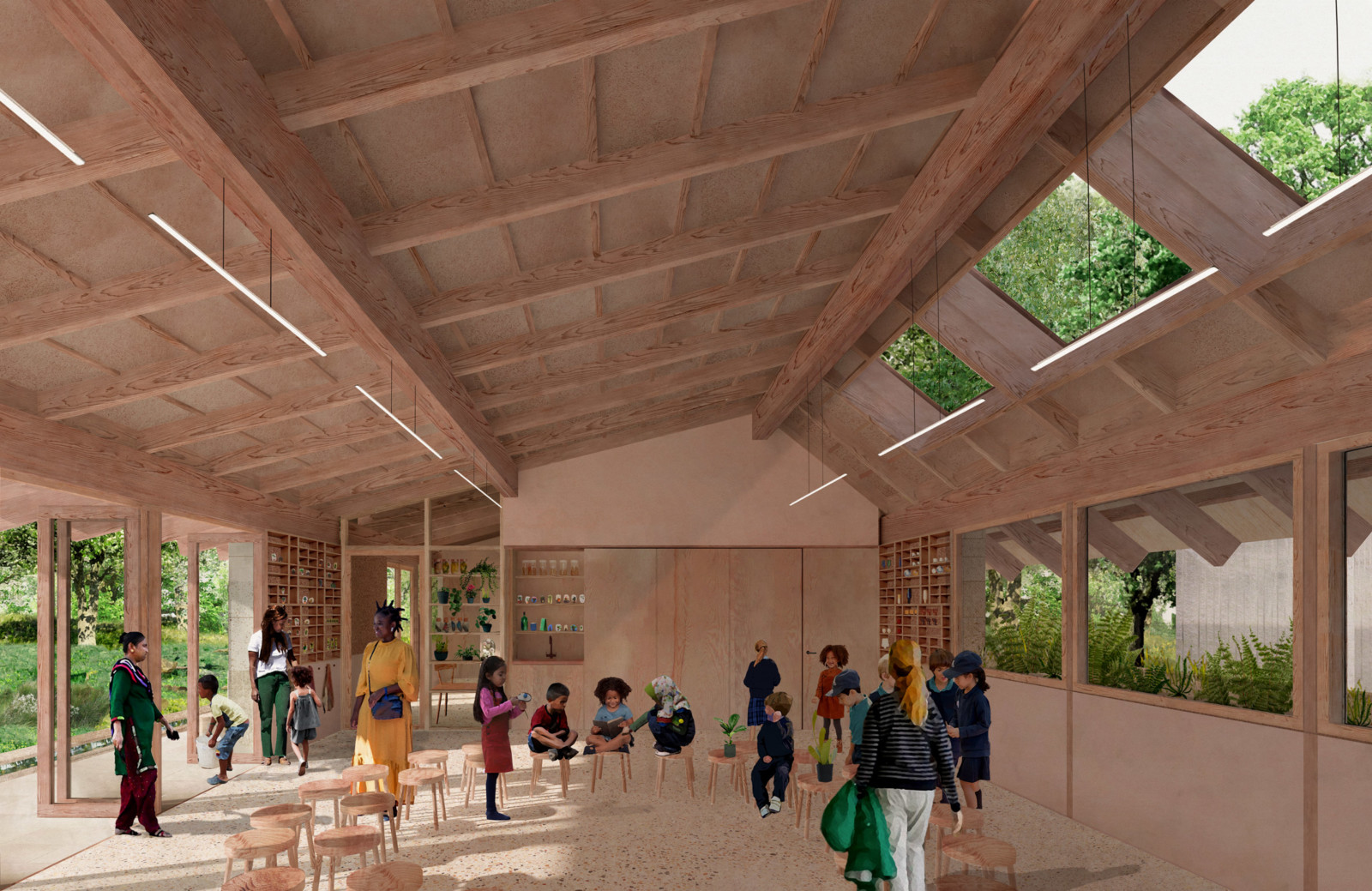
The west garden will end at the museum’s existing Darwin Centre courtyard, which will be redesigned to address the future of biodiversity on Earth.
It will showcase pioneer species – types of organisms that are the first to colonise barren environments – and encourage visitors to help preserve nature by highlighting approaches to climate adaptation and ways to improve biodiversity.
西花園將在博物館現有的達爾文中心庭院結束,該庭院將經過重新設計以應對地球上生物多樣性的未來。
它將展示先驅物種-最早在貧瘠環境中殖民的生物類型-並鼓勵遊客通過強調氣候適應方法和改善生物多樣性的方法來幫助保護自然。
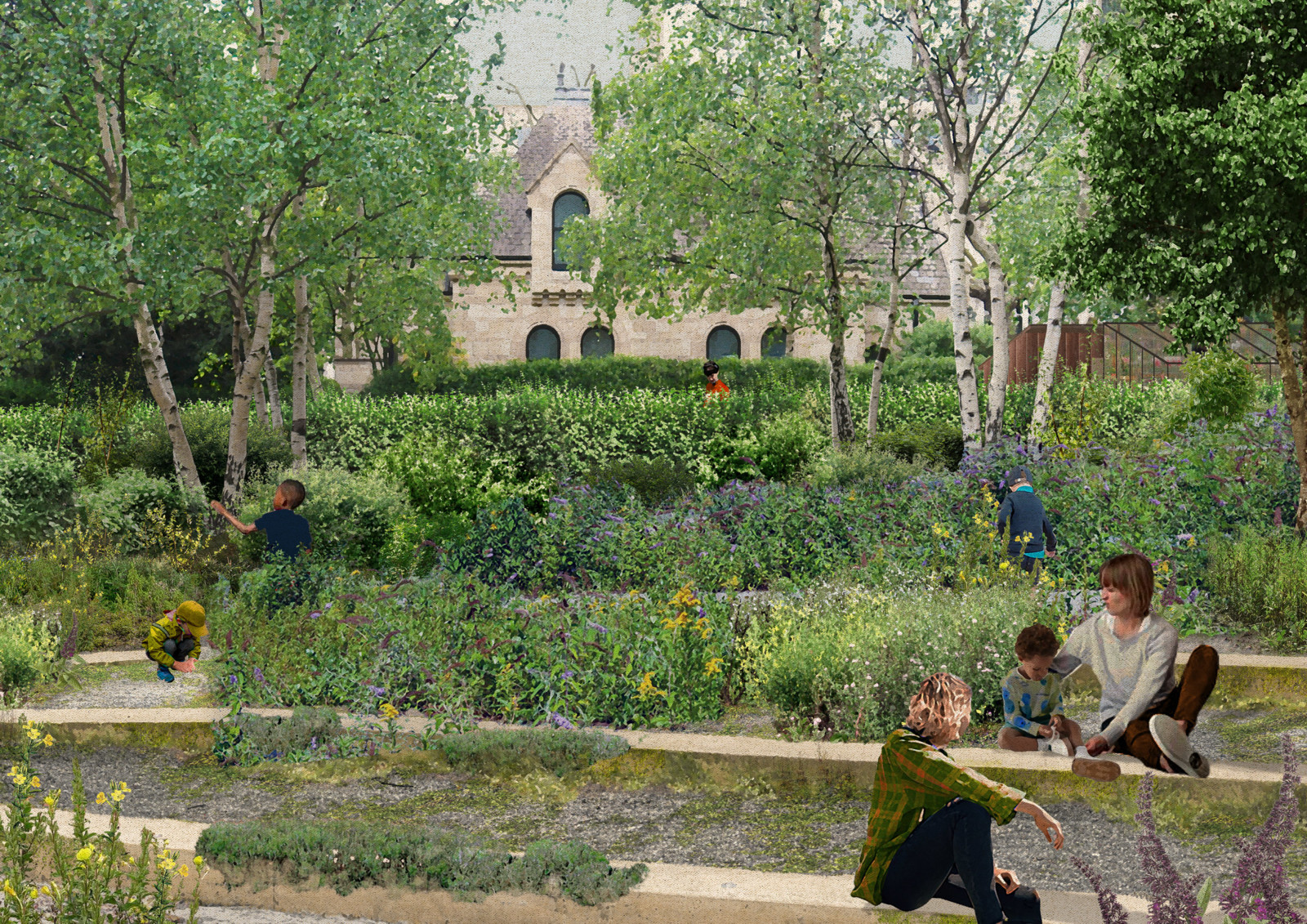
The scheme will be complete with a bronze sign at the end of a ramp leading to the museum’s entrance featuring a quote by David Attenborough, reading: “the future of the natural world, on which we all depend, is in your hands”.
Attenborough, a British broadcaster and natural historian, has welcomed the proposal and said it will help “the next generation develop the strong connection with nature that is needed to protect it.”
該計劃將在通往博物館入口的坡道盡頭帶有青銅標誌,並引述大衛·阿滕伯勒(David Attenborough)的話:“我們賴以生存的自然世界的未來,掌握在您的手中”。
英國廣播公司和自然歷史學家阿滕伯勒(Attenborough)對這一提議表示歡迎,並表示將幫助“下一代與保護自然的人建立牢固的聯繫”。
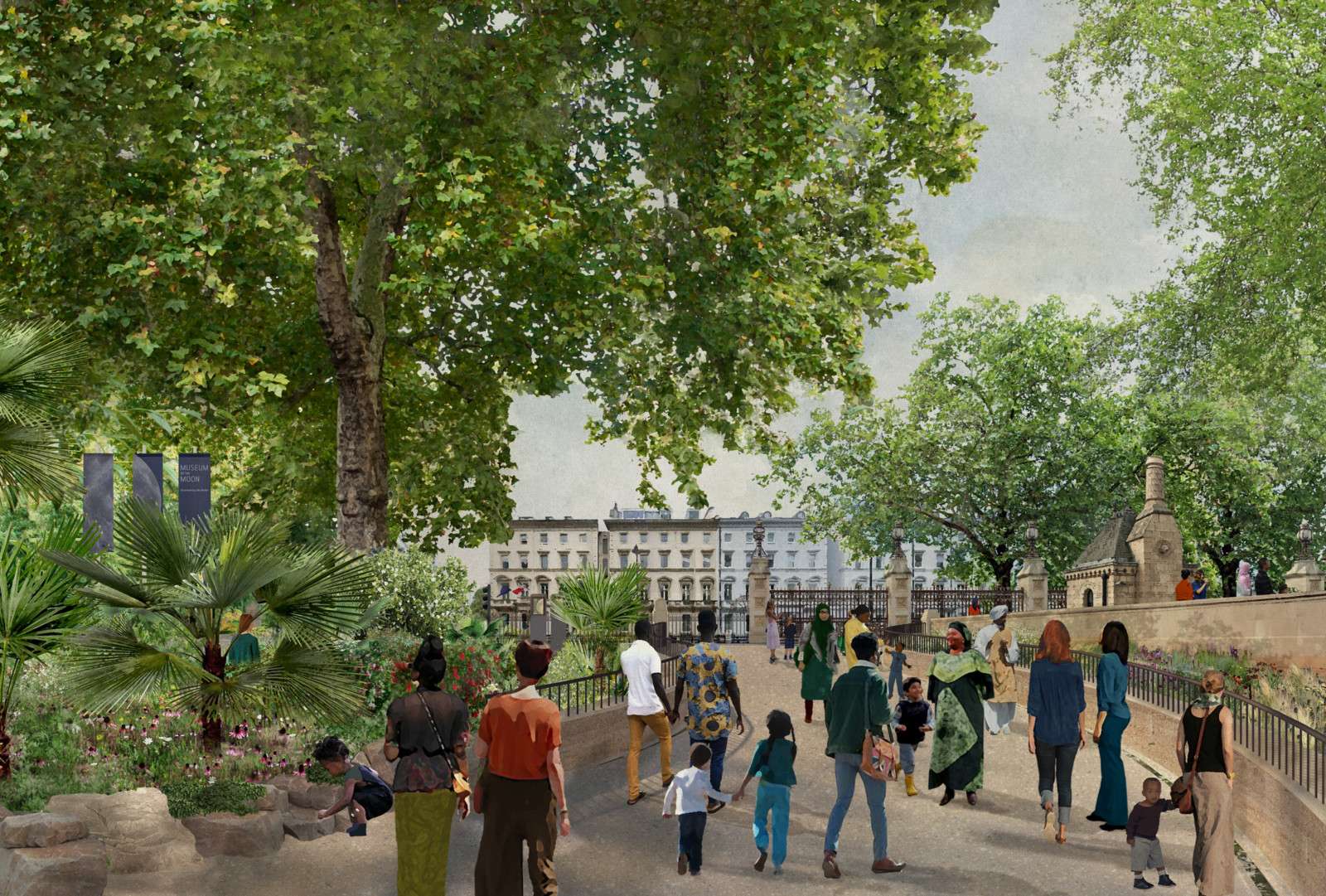
Feilden Fowles is a British architecture studio founded in 2009 by Fergus Feilden and Edmund Fowles. In 2019, it was shortlisted for the Stirling Prize for its design of The Weston visitor centre and gallery at Yorkshire Sculpture Park.
Other recent projects by the studio include a red brick school building in Somerset and a showroom and office for Uniform Wares that offers visitors a glimpse of the watchmaking process.
Visuals are by Feilden Fowles and J & L Gibbons.
Feilden Fowles是一家英國建築工作室,由Fergus Feilden和Edmund Fowles於2009年成立。 在2019年,因其在約克郡雕塑公園的威斯頓遊客中心和畫廊的設計而入圍斯特林獎。
該工作室最近的其他項目還包括薩默塞特郡的一所紅磚校舍,以及統一服裝陳列室和辦公室,使參觀者可以一窺製表過程。
視覺效果由Feilden Fowles和J&L Gibbons撰寫。

